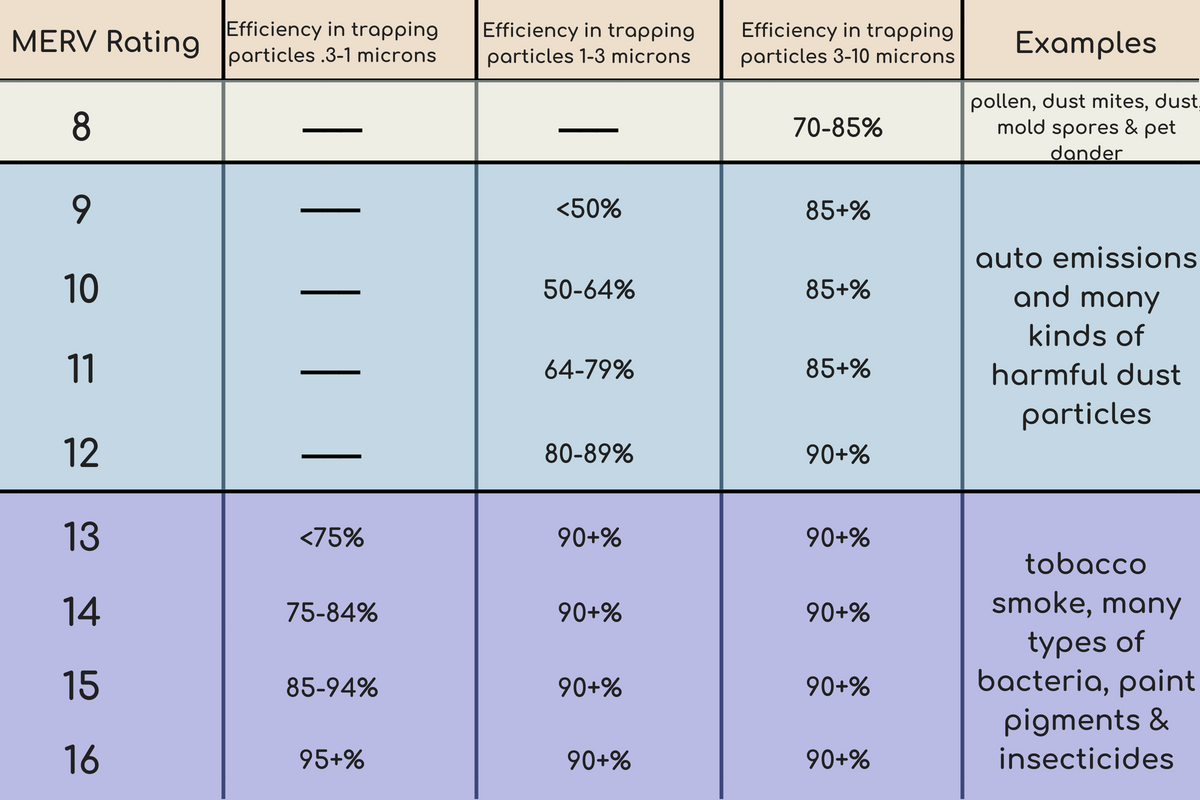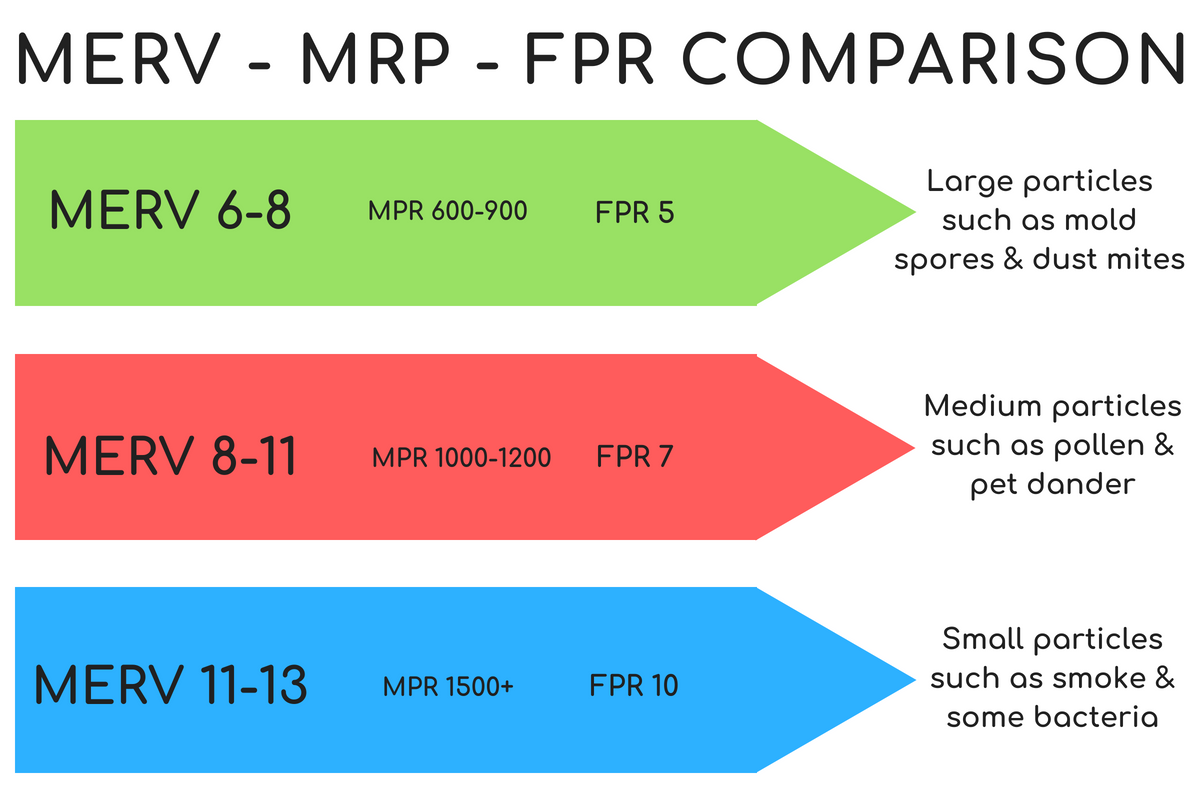Comparing MERV, MPR & FPR Filter Ratings
While searching for the right air filter rating, it's not uncommon for people to find more confusion than clarity. One of the most frequent questions we hear pertain to air filter ratings, which include MERV, MPR and FPR.
What is MERV
Before delving into these ratings too deeply, it's important to make the distinction that MERV is actually the only universal standard that's regulated by an independent third party; all other filtration ratings were developed by private companies. The MERV filter rating standard takes into account larger particles as well as microscopic ones, and is designed to help you judge the effectiveness of a filter at a glance.
MERV stands for Minimum Efficiency Reporting Value. Traditionally, this value has ranged from 1 to 16, with 1 being at the least effective end and 16 encompassing the highest standard of air filtration. Recent changes to filters have extended this value to 20, however, filters above 16 are rarely needed in home or office applications.
A filter's MERV rating is established by determining how effective it is in removing particles based on these three categories:
- Particles 10-3 microns in size
- Particles 3-1 micron in size
- Particles 1-0.3 microns in size
The smaller the particle and the more effective a filter is at capturing it, the higher its MERV rating will be.
Some examples of particles 3-10 microns in size are pollen, dust mites, fibers from carpet, common household dust, mold spores and pet dander. Particles that are 3-1 microns include auto emissions and many kinds of harmful dust particles. Particles smaller than 1 micron include tobacco smoke, many types of bacteria, paint pigments and insecticides. Filters with a MERV rating of 17-20 can capture particles that are smaller than .3 microns in size. Filters like this are used in clean rooms or other spaces with highly sensitive equipment. A filter providing this amount of filtration is not designed for everyday HVAC units.

Now that we're more familiar with the universally accepted standard for filter rating, let's delve into some other ratings you may see when researching air filters for your home or office.
What is MPR
MPR stands for Microparticle Performance Rating, and this standard was developed by 3M. You'll see MPR ratings on 3M filters exclusively, and that's because this rating isn't universally accepted. According to 3M's website, "3M developed the Microparticle Performance Rating (MPR) system to demonstrate a filter’s ability to capture the smallest airborne particles—from 0.3 to 1 micron in size from the air passing through the filter."
As we know from learning about MERV, such a rating already exists. So why did 3M choose to do this?
Simply put, MPR is a marketing technique designed to capture customers focused on eliminating microparticles.
While trapping microparticles is an effective strategy for reducing allergens and airborne illness, it's important to note that not all systems are capable of handling MERV 13+ filtration. Filtering out microscopic particles will restrict airflow to your system and can stain your unit, if the filter you’re using and your unit aren’t compatible. Older units are especially susceptible.
Furthermore, focusing solely on microparticles fails to address the benefit of trapping particles above 1 micron: protecting your HVAC unit from particle buildup. In fact, all filters rated MERV 9-12 are capable in providing the filtration most homeowners need in order to keep their units running effectively.
What is FPR
Here again is another air filter rating developed independently and not universally recognized. FPR simply stands for Filter Performance Rating, and this way of measuring the efficacy of an air filter was developed by The Home Depot for brands sold exclusively in their stores.
While The Home Depot's FPR filters also are never tested by an independent third-party, testing does involve both large and small particles, which is important when considering an air filter. In addition, FPR takes into account how long the filter generally lasts.
Based on these tests, an FPR rating of 4, 7, 9 or 10 is assigned to the filter. However, because these ratings aren't independently verified, it's difficult to call FPR a "standard". Since the ratings are simply based on The Home Depot's definition of "small" and "large" particles, it's best to refer to the MERV rating for a more precise definition of the filter's effectiveness.
We recommend that when choosing an air filter, you consider its MERV rating above all. While it's not possible to draw direct comparisons between MERV, MPR and FPR, you can use the chart below to help you decide how to approximately convert filter ratings.
